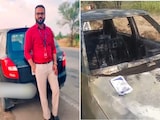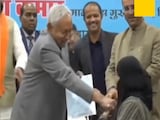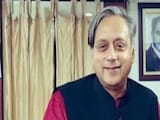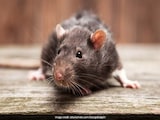On April 16, two sadhus were brutally killed by an angry mob of villagers in Palghar, Maharashtra. The sadhus were on their way to Gujarat to attend a funeral and decided to take their car through the interiors to avoid police check-points on the highway to enforce the coronavirus lockdown. They did not have a pass to travel during the lockdown.
A little after 9 pm, their car was stopped by a lynch-mob wild over rumours of kidnappers and organ traffickers roaming their area. Within an hour, the sadhus and their driver were dead.
The incident has former Maharashtra allies BJP and Shiv Sena going at each other at a time the nation is fighting the COVID-19 pandemic. First the BJP attacked the Sena over the Palghar killing, then the Sena hit back after two sadhus were murdered at a temple in UP, a state ruled by the BJP.
Maharashtra has the highest number of virus cases and deaths in the country, most of them in Mumbai. At this time, political parties setting aside their rivalries would have been a positive message. But that was not to be.
The horrific mob-killing of the sadhus has led to standard-issue wrangling between two Hindutva-based parties.
Visuals of the Palghar killing are gut-wrenching. The older of the two sadhus, 70, is seen holding on to a cop as the mob attacks him with sticks and rains blows. The police were outnumbered by the crowd that had built up in violation of lockdown orders. A back-up team would have taken time to reach as some parts of the road also has a 'ghat' section, police officials say.
The incident took place at Gadchinchale village, around 80 km from the Palghar district headquarters, and takes around two hours by road. The sadhus were being thrashed by the mob when a police team arrived. The police are seen trying to get the sadhus into a van but they fail as the mob doesn't let go. The police helplessly watched the mob set upon the sadhus.
The police say they made arrests within 48 hours and over 100 people have been arrested, including some who had fled.
But two days after the incident (a day after news outlets reported it), social media was on fire. Hashtags tried to portray the incident as an attack on Hindus in Maharashtra on the Shiv Sena's watch. It was alleged that the police, which reports to the state government, did nothing to save them.
The narrative was clear. Somehow make this about an attack on Hindus. And somehow make this about the Chief Minister, Uddhav Thackeray. Soon, hashtags about Uddhav Thackeray were trending and the well-oiled machinery of hashtag manufacturers on social media had success.
The state police did fail in their duty to protect the sadhus. But what was left out of the narrative were important facts like distance from the nearest police station or the district headquarters; the number of policemen on the spot and the size of the crowd. The nearest police station was also about an hour's drive from the village, which is close to the border with Dadra and Nagar Haveli.
Two policemen were suspended. The police are investigating the sequence of events.
After Maharashtra Home Minister Anil Deshmukh announced that there was not a single Muslim among those arrested - some of the arrested have been identified in the footage - Twitter warriors realised that the narrative needed tweaking.
The focus shifted.
Palghar has a predominantly tribal population and includes some converts to Christianity. They became the next target of the hashtag army.
But this incident clearly had no communal angle. In his address to the state on the coronavirus pandemic, even the Chief Minister clarified that there was no communal angle to the crime. The message did not reach his intended audience. Or they simply chose to ignore it.
Palghar had already been communalised and politicised.
In the cacophony of the debates, hashtags, incendiary statements and social media outrage, no one seems to be talking about the Sadhus.
Videos were circulated on social media of a priest talking about a "Hindu-Rashtra (Hindu nation)" and it was claimed the speaker was the elderly sadhu who died. That is also untrue, fact-checks revealed.
The sadhus, killed by rumours, haven't been spared by the fake news industry after their death. NDTV reported facts. Facts that had been verified and cross-checked.
BOOMLive, a fact-checking organisation, put out a detailed report with evidence on what led to the mob attack.
Soon after the news reports on the sadhus' deaths gained traction on social media, Uttar Pradesh Chief Minister Yogi Adityanath called Uddhav Thackeray. The Maharashtra Chief Minister also received a call from Home Minister Amit Shah.
Days later, when two sadhus were murdered in a temple in Uttar Pradesh, Uddhav Thackeray returned the favour, by dialling Yogi Adityanath. This time, it was the Shiv Sena on the offensive, accusing the BJP of double standards.
"There were no television debates, no Twitter hashtags, no call from the Union Home Minister, no opinions from TV anchors, no concern expressed from Union Ministers for the death of two sadhus in Uttar Pradesh." Shiv Sena spokesperson and Rajya Sabha MP Priyanka Chaturvedi tweeted.
That is how the death of sadhus in Maharashtra and Uttar Pradesh came to be engulfed in politics.
Reporters have to be able to sift through the politics and report the facts. There were two crimes, none of them communal or hate-related. The victims were sadhus but these were not attacks on Hindus. They weren't hate crimes. Unfortunately, there were attempts to make the Palghar crime look like one.
Reporting straight news is becoming challenging as everyone expects reporters to feed the narrative cooked up by keyboard warriors.
Hashtag armies and Twitter warriors don't bother with facts. They are only concerned with narratives.
(Saurabh Gupta is Bureau Chief - Mumbai at NDTV)
Disclaimer: The opinions expressed within this article are the personal opinions of the author. The facts and opinions appearing in the article do not reflect the views of NDTV and NDTV does not assume any responsibility or liability for the same.















